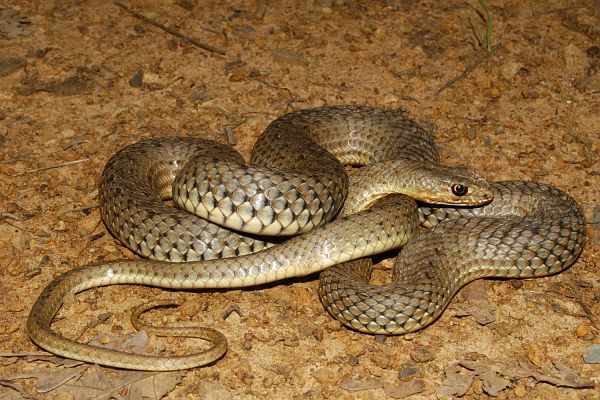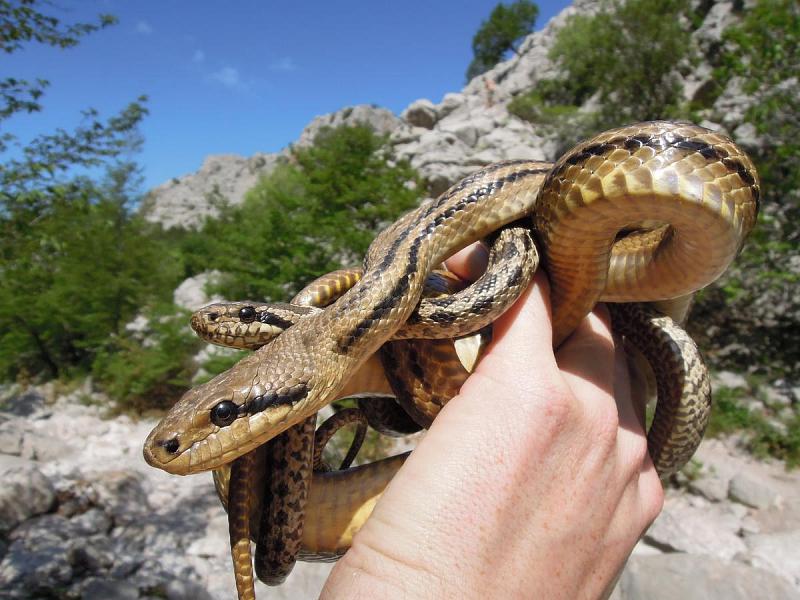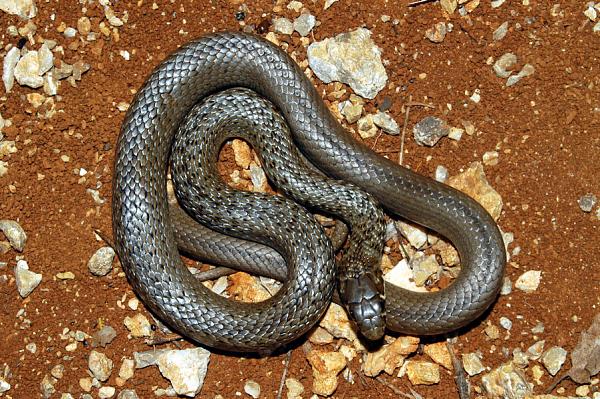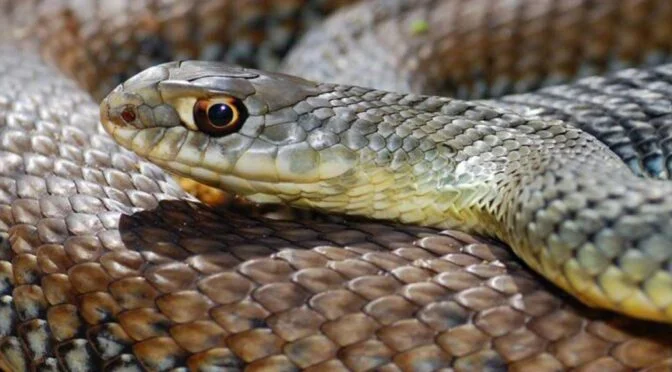As we embark on our journey through the enchanting Kornati Archipelago, don’t be surprised if you come across the Kornati Islands snake species. These non-venomous serpents are an integral part of this captivating ecosystem, contributing to the unique wildlife tapestry that defines these stunning islands.
As you venture through the pristine landscapes of Kornati, you might come across four distinct snake species that call this archipelago home. Each one is a testament to the rich biodiversity that flourishes in this extraordinary corner of the world. Let’s meet them.
Kornati Islands Snake Species
1. Montpellier Snake (Malpolon monspessulanus insignitus)

With its distinctive markings and graceful movements, the Montpellier snake is a truly formidable reptile found in the Kornati Islands. This non-venomous species typically reaches lengths of up to 2 meters, making it one of the larger snake residents.
Montpellier snakes are known for their striking appearance. They have a slender body covered in an array of intricate patterns and colors, including earthy tones and shades of green and brown. These markings help them blend seamlessly into the rocky landscapes of the Kornati Archipelago.
Montpellier snakes are skilled hunters, primarily preying on small mammals and birds. They are constrictors, meaning they subdue their prey by squeezing it until it can no longer breathe. This efficient hunting strategy allows them to thrive in their island habitat.
Despite their formidable appearance, Montpellier snakes are generally docile and prefer to avoid confrontation. When encountered, they may hiss or mimic striking behavior to deter potential threats, but they are not aggressive toward humans.
2. Four-lined Snake (Elaphe quatuorlineata)

The four-lined snake is another intriguing inhabitant of these islands. With an average length of about 120 centimeters, this snake showcases a distinctive appearance characterized by four dark stripes running along its back, set against a background of lighter scales. Its non-venomous nature, like the other snake species on Kornati, makes it a compelling subject for wildlife enthusiasts.
Feeding primarily on small rodents, birds, and the occasional lizard, the four-lined snake plays a vital role in maintaining the ecological balance of Kornati’s delicate ecosystem.
3. Balkan Whip Snake (Hierophis gemonensis)

True to its name, the Balkan Whip Snake is renowned for its remarkable agility and insatiable curiosity. These slender serpents, which can grow up to 150 cm (approximately 59 inches) in length, are easily recognized by their sleek bodies and distinctive coloration.
Feeding primarily on small rodents, birds, and lizards, the Balkan Whip Snake plays a vital role in maintaining the ecological balance of Kornati’s ecosystem. Their swift movements and sharp eyes make them efficient hunters, darting through the underbrush to capture their prey.
While their quick reflexes might catch your eye, rest assured that these snakes are completely non-venomous. In fact, they are among the gentlest residents of Kornati and are often observed curiously exploring their surroundings, making them a captivating sight for wildlife enthusiasts.
4. Leopard Snake (Zamenis situla)

Adding a touch of the exotic to Kornati’s serpent roster, the Leopard snake stands out with its distinctive spots, resembling the pattern of its namesake big cat. This striking appearance makes it a fascinating find for wildlife enthusiasts.
Measuring approximately 60 to 90 centimeters in length, the Leopard snake is a relatively small snake species, which makes it even more accessible to observe.
In terms of diet, the Leopard snake primarily preys on small rodents, birds, and their eggs. It’s a stealthy hunter, relying on its keen sense of smell and quick reflexes to catch its prey.
During your Kornati adventure, keep a watchful eye out for this reptile as it slithers through the island’s rocky terrain and Mediterranean vegetation. Like its fellow islanders, it poses no venomous threat.
Hiking Safely with a Walking Stick
While these serpents pose no danger, taking precautions when exploring the wild is always wise. We recommend carrying a trusty walking stick during your Kornati hiking.
The rhythmic strokes of your stick as it taps the ground create vibrations that serve as a gentle warning to nearby snakes.
This not only keeps you safe but also minimizes the chance of unexpected encounters, allowing you to enjoy your journey with peace of mind.
As you traverse the breathtaking landscapes of Kornati, keep your eyes peeled for these remarkable snake species. They are just another example of the incredible biodiversity that thrives in this stunning archipelago. So, go ahead and embrace the wild side of paradise – happy exploring! And always remember to tread lightly in this precious natural haven.




